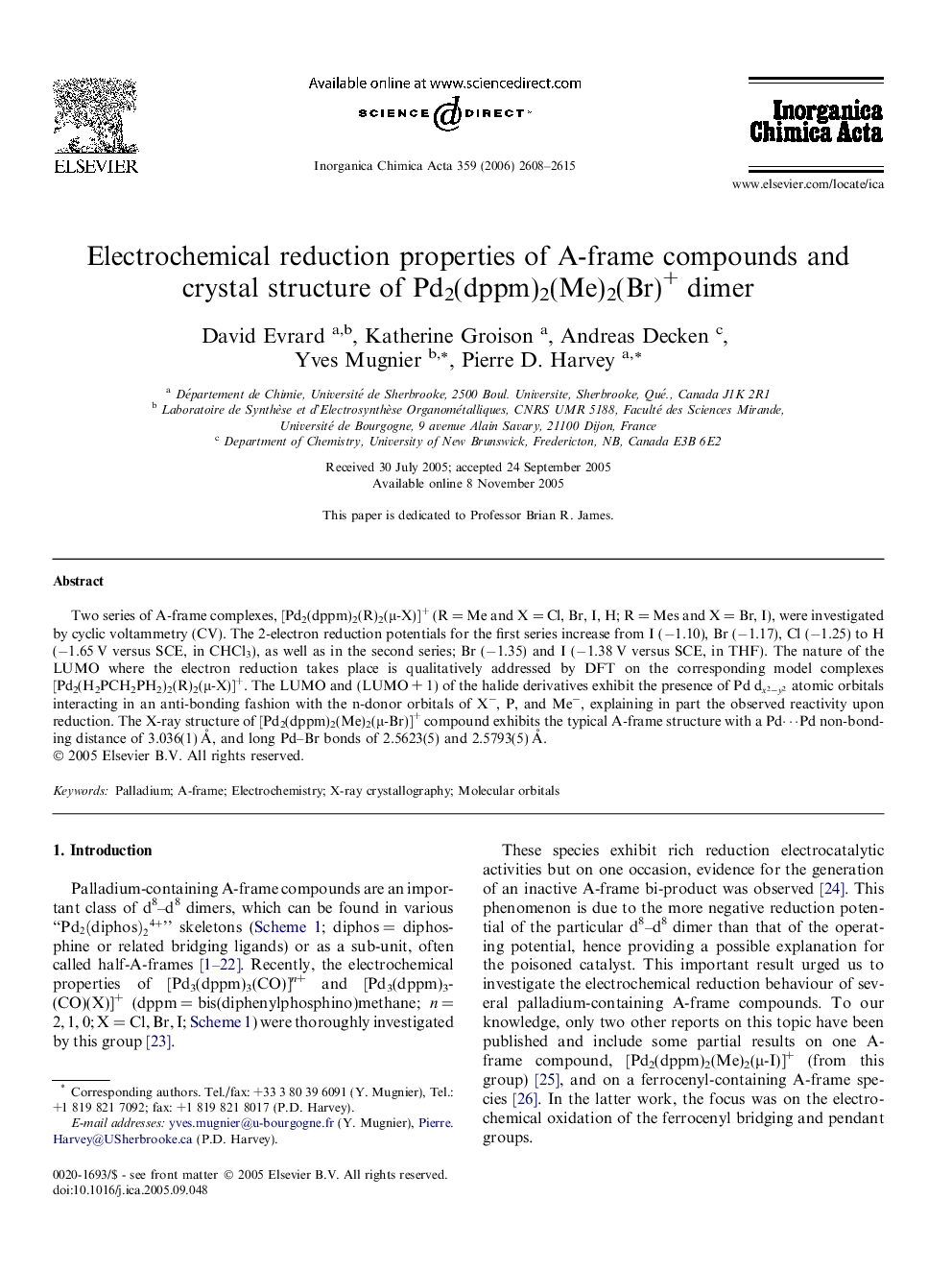| Article ID | Journal | Published Year | Pages | File Type |
|---|---|---|---|---|
| 1312996 | Inorganica Chimica Acta | 2006 | 8 Pages |
Two series of A-frame complexes, [Pd2(dppm)2(R)2(μ-X)]+ (R = Me and X = Cl, Br, I, H; R = Mes and X = Br, I), were investigated by cyclic voltammetry (CV). The 2-electron reduction potentials for the first series increase from I (−1.10), Br (−1.17), Cl (−1.25) to H (−1.65 V versus SCE, in CHCl3), as well as in the second series; Br (−1.35) and I (−1.38 V versus SCE, in THF). The nature of the LUMO where the electron reduction takes place is qualitatively addressed by DFT on the corresponding model complexes [Pd2(H2PCH2PH2)2(R)2(μ-X)]+. The LUMO and (LUMO + 1) of the halide derivatives exhibit the presence of Pd dx2-y2dx2-y2 atomic orbitals interacting in an anti-bonding fashion with the n-donor orbitals of X−, P, and Me−, explaining in part the observed reactivity upon reduction. The X-ray structure of [Pd2(dppm)2(Me)2(μ-Br)]+ compound exhibits the typical A-frame structure with a Pd⋯Pd non-bonding distance of 3.036(1) Å, and long Pd–Br bonds of 2.5623(5) and 2.5793(5) Å.
Graphical abstractThe title A-frame compounds exhibit irreversible 2-electron reduction waves at negative potential > −1.10 V versus SCE and depend on X and R. The interpretation of the data are supported by DFT which indicates that the LUMO is composed of Pd (dx2-y2)(dx2-y2) interacting in an anti-bonding fashion with the lone pairs of X−, P, and R−.Figure optionsDownload full-size imageDownload as PowerPoint slide
